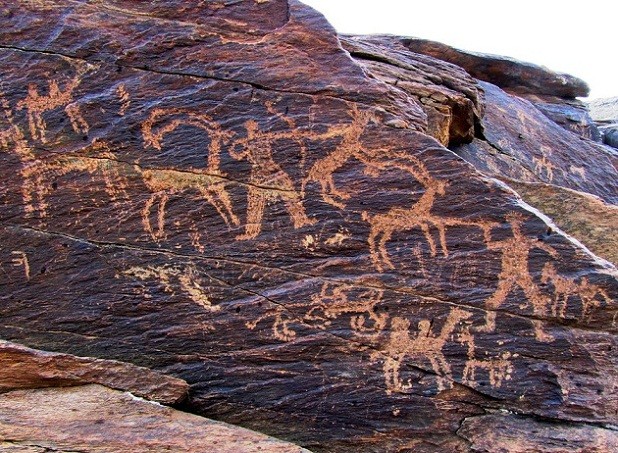Studying engraved images traditionally focuses on iconology, iconography, and stylistic patterns without analyzing the complexities of the engraving techniques. Recently, a groundbreaking study by a team of researchers offers a new perspective on ancient rock engravings and the techniques used by old engravers.

3D Assessment of Engravings Using Specialized Software
The multidisciplinary team comprises a computational archeologist, a computer programmer, and an artist from the Hebrew University of Jerusalem. Their research was conducted at Site 25 in Timna Park, in Southern Israel, where they discovered engraved rocks whose production process caught their attention.
Headed by Prof. Leore Grosman of the Computational Archeology Laboratory, the team introduced an innovative research method emphasizing the characteristics of the techniques applied in making rock engravings during ancient times. The research team aims to improve our understanding of ancient artworks by considering technological variations indicating the engraver's production process.
To make this possible, the scientists obtained 3D scans of two ancient engravings and contemporary graffiti from Site 25 in Timna Park. The scans were subjected to accurate analysis using a specialized software called ArchCUT3-D, developed to assess the 3D micromorphological characteristics of the incisions that formed the engraving. The software enabled precise and repeatable analysis by extracting 3D slices of the incisions and examining the surface micromorphology.
The research study reveals that the incisions within the engravings were carried out using distinct techniques. As the team identified these distinctive characteristics, they successfully exposed the unique aspects of the engraving procedures, including the ergonomic conditions and the consistency level of the embedding gestures.
According to the researchers, using ArchCUT3-D software represents an important computational breakthrough in archeology. The incision techniques are recognized through the micromorphology specifications. Moreover, the software also helps reconstruct the engraving gestures and the individual production process. This archeological feat is key to understanding the quality and cultural importance of the ancient rock engravings.
Various Forms of Ancient Rock Art
Rock art refers to the artwork done on natural rock surfaces such as cave walls, boulders, cliffs, or sheer standing rocks. Also known as "rock carving," "rock painting," or "rock engraving," this masterpiece is considered evidence of humanity's first craftsmanship. Since the archeologists established a systematic study of rock art, every discovered carvings are identified in any of the three categories: petroglyphs, pictographs, and earth figures.
Petroglyphs refer to all rock art that is considered to be rock carvings. These could be made using various procedures such as chiseling, incision, or scratching. Another form of petroglyph is a cupule which looks like a cup-shaped hole in the side of a stone surface.
Pictographs are painted artwork on rock surfaces, considered the most beautiful form of rock art. In making such masterpieces, the ancient people used pigments like charcoal, natural chalk, ochres, kaolinite clays, ground minerals, and diatomaceous earth. Hands, fingers, stamps, and brushes were used in applying these pigments to the stone surfaces.
Meanwhile, earth-figure rock art is created by scraping symbols into the earth's surface. One of its most famous examples is the Nazca lines, where almost 300 figures were etched on the Peruvian desert floor.
RELATED ARTICLE: Europe's Oldest Known Engravings Found in French Cave Could Have Been Made by Neanderthals; Carvings Were Sealed Inside Cave For At Least 57,000 Years
Check out more news and information on Rock Engravings in Science Times.














